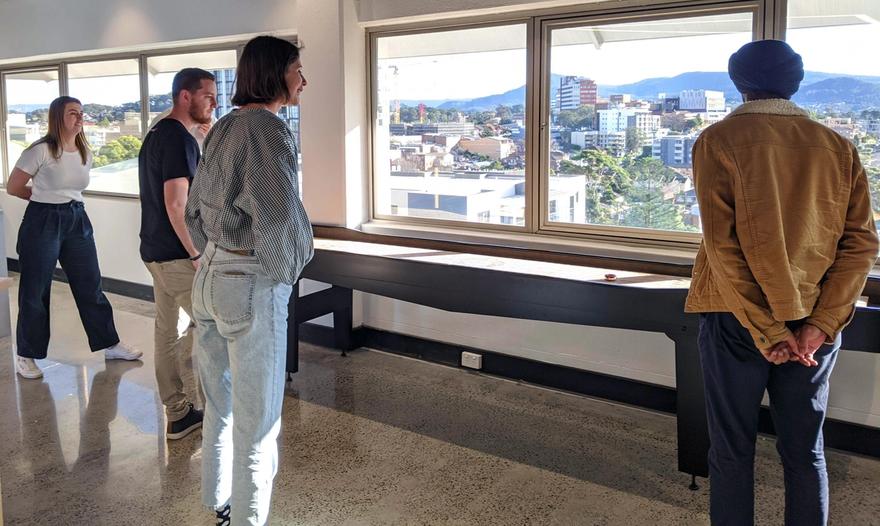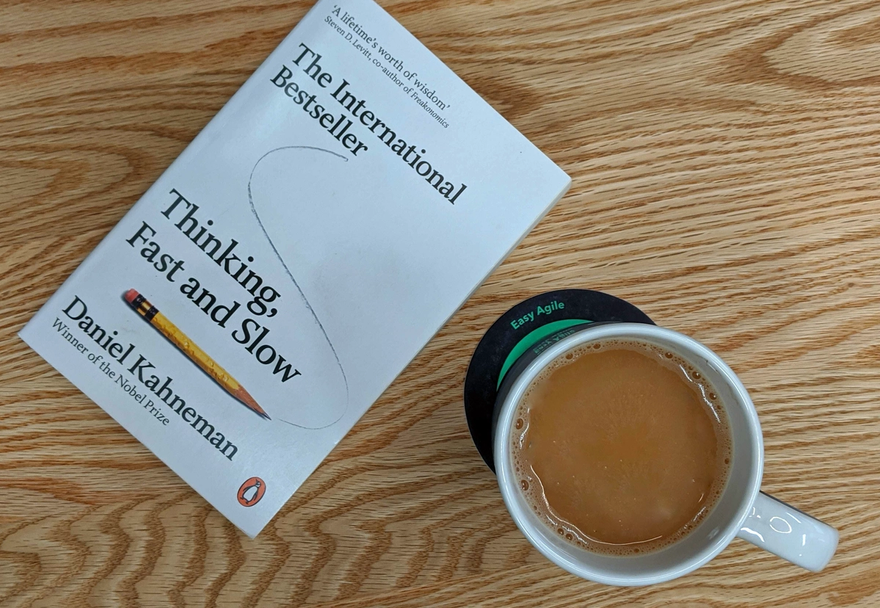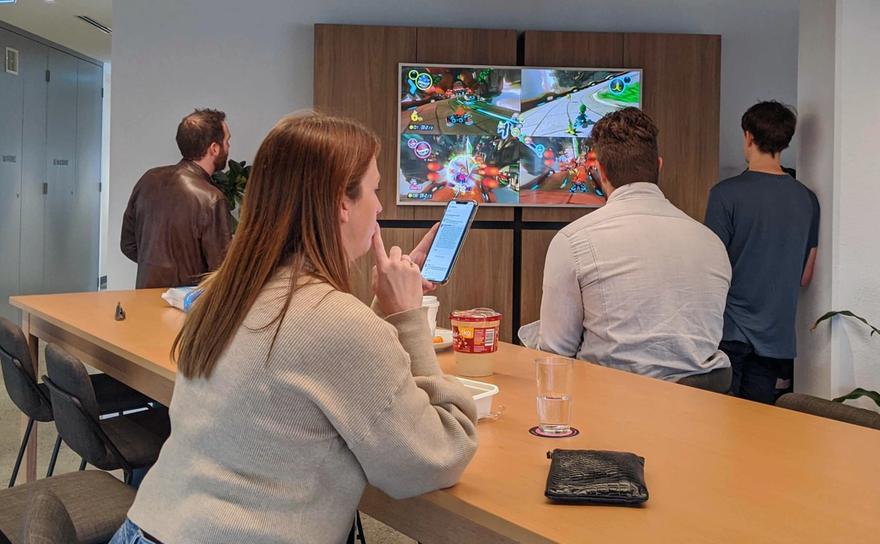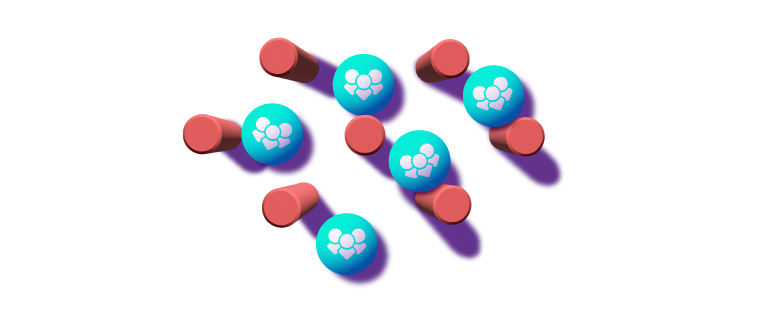Life at Easy Agile
6 min read

5 things I've learned since starting at Easy Agile
Thu Aug 06 2020
I started at Easy Agile expecting a steep learning curve. In any new job you expect that to some degree, but for me the layers of new - sector, product, audience, way of working, environment - really stacked up.
In retrospect my expectations were not only spot on, but if that learning curve were a mountain, let’s just say I’d need to lace my boots, grab my hiking poles, compass (and potentially the kindness of an experienced Sherpa) to lead the way. My first few weeks have been chock full of new stuff. So as a marketer whose entire decade-long career was in higher education until 6 weeks ago, what have I actually learned (so far)?
1. I've learned you can be small, but mighty
As I have gotten to know the 15 members of my team I have been in awe of the richness of experience, skills and talent accumulated. Sure there are many times when I haven’t understood a few words in a sentence, but to think that this team can build, maintain and champion apps that can and do transform the way people work is just plain cool. 150,000 people every month in over 2,000 companies in 50 countries around the world to be exact. Agile is a way of working that focuses on the customer, is iterative, and engages the team at regular intervals. It is certainly powerful, but even more so in the time of working remotely where we rely so much on the tools that enable us. To think some of those tools have been made by the people I share an office with here in Wollongong is pretty incredible.
2. I've learned to 'system two' and to 'timebox'
In my first week at Easy Agile I heard people using phrases like ‘my system one is…’ and ‘I’ll need to system two that'. ‘Engage system two’ is actually one of our company values. These are terms widely used in psychology but derived from Daniel Kahneman’s book ‘Thinking, Fast and Slow’ which incidentally sits on the shelf in our office library (yep, we have a dedicated section in the office to books and are periodically given books to read that are of interest or align with our roles - as a bibliophile this is my idea of heaven).
System 1 is the auto-pilot, quick to respond, little to no effort thinking aka your initial or instinctive reaction. System 2 is to process something, take your time thinking it through - essentially mull it over. Combined with a workplace that is focused on outcomes not output, you can take the time to understand before putting forward - or being expected to put forward - an approach or execution. With this in mind I have found myself taking the time to think something through without feeling like I have to have an answer straight away, and when you feel as if you have time to think, you feel as if you can do your best work.
On the flip side I also am learning to ‘timebox’ tasks. At Easy Agile we work in six-week opportunity cycles, where put simply, work that aligns with the broader company goals is put forward, scoped according to two-week sprints, and then discussed by the team to decide what to work on. While marketing is always responsive to external factors and deadlines, I’ve found this concept really useful - dedicating tasks against time. As a supporting concept timeboxing is about taking the to-do list and allocating the tasks within it against timeslots, as opposed to letting the list run wild with no end date in sight.

3. I've learned what work/life balance looks like in practice
It’s always seemed such an elusive yet desirable concept and I must confess I’m not sure I’ve quite nailed it just yet, but in our office you’d be hard pressed to find someone here before 8:30am or after 5pm. Your inbox has no new emails crop up in it overnight. Everyone takes an hour lunch break. When work is scoped based on what is feasible and realistic - and it’s OK to say otherwise - where customer experience and being the customer is most important, nobody is stretching themselves to meet an arbitrary deadline. Having said that, if I clock up an extra hour or so or turn my computer on from home, it’s because I want to. I’m enjoying the work I’m doing, and that’s kinda nice too.
4. I've learned I suck (/ have room for improvement) at Mario Kart
If you visit the Easy Agile office at lunchtime our team is usually sat around sharing a meal and having a chat. But if you hang around for long enough, sure enough there will be a game of Shuffleboard going on or the Nintendo controllers are out. Since starting with the team I’ve had my first game of Mario Kart in 15 years and my score increased from 12th to 7th place over one lunchtime. In retrospect, my downfall may be that I chose Yoshi as my character instead of the team’s favourite - Peach. Still learning! Work and fun are not mutually exclusive concepts and I’ve seen and experienced the proof first-hand.

5. I've learned change isn't as scary as I thought
And that I can learn new things. While I wasn’t as long in the tooth in my career in the one area of marketing as some, it is a bit overwhelming as a marketer to transplant yourself into an entirely new sector. Was I doing the right thing? What if I changed and didn’t like it? Was I only good at my job because it was my comfort zone? Fear talk. So I may not know my JQL from my SQL, but slowly and surely I’m learning the scope of where I can add value to the team and our work. Marketing is a collection of skills I’ve learned over time, and sure experience gives credence to the ability to practise those skills, but skills are transferable. I’m so glad this team took a gamble on my passion and potential to learn because I’m getting to apply those skills to whole new and exciting contexts and learning something new every day as a result.
So while I haven’t reached the summit, I have reached a milestone that’s part of the way up the Easy Agile mountain. I’m not even sure if reaching the top is a good goal to have because it means there’s no further to go. It implies there’s no more to learn. I believe learning should be a constant state, and this is something wholeheartedly encouraged at Easy Agile. As I take stock of how far I’ve come with the help and support of amazing team members (read: mountaineers), I can say that you don’t need to reach the top to appreciate the journey, and the view from here - even so far - is pretty inspiring.

